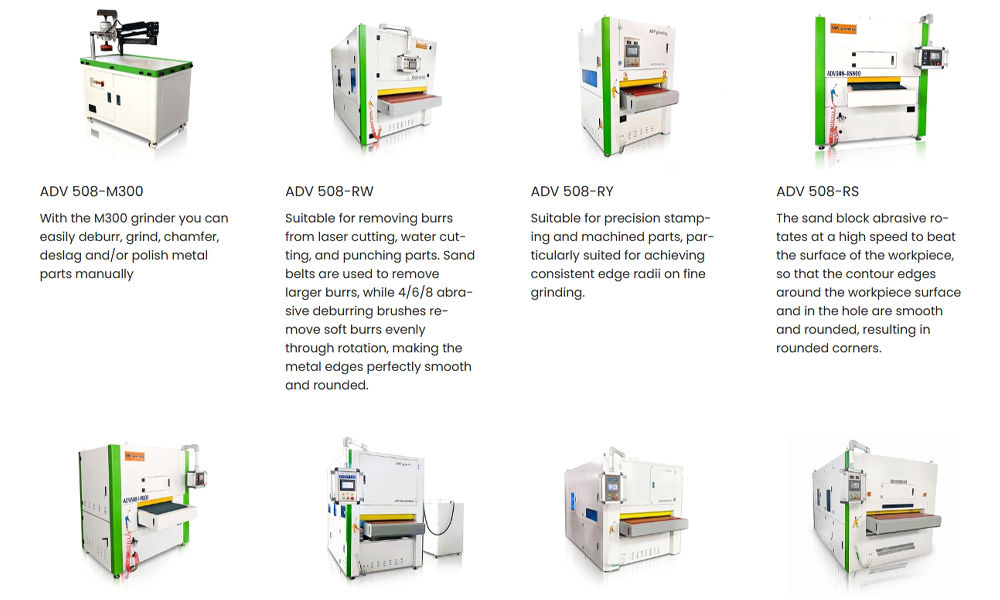Of course. This is a very specific and common challenge in metal fabrication. Parts from punch cutting, flame cutting, and plasma cutting have distinct types of "burrs" and require a robust approach.
The key here is that you're not just dealing with fine burrs from machining; you're dealing with heavy, oxidized, and often variable slag and roll-over.
Here’s a tailored guide to find the right deburring machine for these processes.
Step 1: Analyze the Specific "Burrs" from Each Process
This understanding is critical for selecting the right method.
Punch Cutting: Creates a "roll-over" burr or a pronounced "breakout" on the underside of the sheet. This burr is tough and rolled over the edge.
Flame & Plasma Cutting: Creates dross or slag. This is re-solidified, oxidized metal that adheres to the bottom edge of the cut. It's often very hard, brittle, and uneven.
Common Challenges for All:
Part Size: These are often large, flat sheets or plates.
Part Weight: Can be very heavy.
Throughput: Typically high-volume production.
Variability: The amount of dross/roll-over can vary based on material, tool wear, and process parameters.
For large, flat parts from these processes, you are almost exclusively looking at Through-Feed or Pass-Through Systems. Manual or batch methods would be far too labor-intensive.
Primary Recommendation: Heavy-Duty Wide-Belt Grinders / Abrasive Planers
This is often the best and most efficient solution for removing plasma dross and punch roll-over.
Strong Alternative: Heavy-Duty Descaling / Deburring Brushing Machines
These machines use powerful, rotating brush heads.
Combination Machines: The Ultimate (but Pricier) Solution
Many manufacturers offer machines that combine both grinding and brushing stations in a single pass-through line.
Typical Configuration:
Station 1: Grinding Head - A coarse belt for aggressive dross removal.
Station 2: Brushing Head - To break the sharp edge left by the grinder and create a smooth radius.
Why it's Ideal:
One-Pass Operation: Removes the toughest dross and applies a finished edge in a single cycle.
Maximum Versatility: Can handle any job, from the lightest punch burr to the heaviest plasma slag.
Decision-Making Flowchart & Guide

Key Questions to Ask Yourself & Suppliers (ADV Grinding)
When you contact machine suppliers, have the answers to these questions ready:
Material & Thickness: What is the hardest material and the maximum thickness you process? (e.g., "1-inch thick stainless steel").
Part Dimensions: What is your maximum part width, length, and weight?
Production Speed: What is your required throughput in feet/meters per hour or parts per hour?
Primary Problem: Is your #1 issue plasma dross or punch burrs? (This guides the primary technology).
Final Edge Requirement: Do you just need the burr gone, or do you need a specific, smooth radius for welding or safety?
Automation Level: Do you need manual loading/unloading, or should it integrate with a conveyor system?
Action Plan: Test, Test, Test!
This is non-negotiable. The variability in dross means you must test your actual parts.
Gather Samples: Collect your worst-case scenario parts—the ones with the heaviest, most stubborn dross and the largest punch burrs.
Contact Suppliers: Find reputable manufacturers of pass-through grinding and brushing machines - like ADV GRINDING Finishing Machine Supplier
Send Samples for Demo: Send them your samples and ask for a processing report. They will tell you:
The machine configuration they used.
The conveyor speed (which tells you the throughput).
The consumable wear (cost of belts/brushes).
Evaluate the Results:
Is the dross 100% removed?
Is the edge consistent?
Is there any part warping or damage?
Does the edge finish meet your requirement?
Summary: For punch, flame, and plasma cut parts, start your search with heavy-duty pass-through systems. A Wide-Belt Grinder is your best bet for guaranteed dross removal, while a Brushing Machine is excellent for deburring and edge radiusing. For the ultimate in quality and efficiency, a Combination Machine is the top-tier choice.
More:




